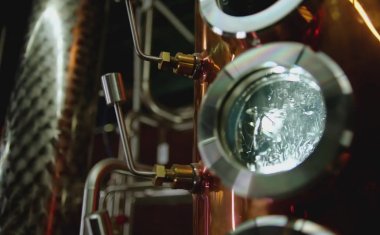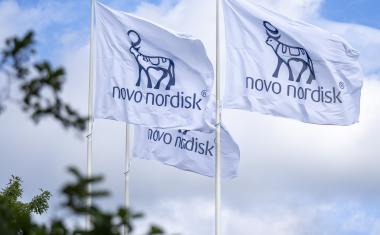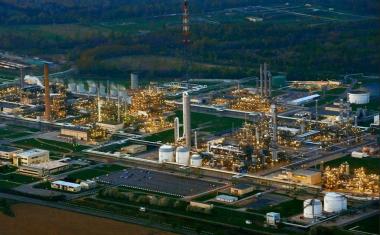Asian Petrochemical Firms Risk High-end Chemicals Deluge
Petrochemical firms risk creating a glut of high-end products in Asia as they invest billions of dollars to move up a value chain threatened at the bottom end by cheap U.S. ethylene.
Firms including Taiwan's Formosa Petrochemical, South Korea's Lotte Chemical and Royal Dutch Shell are building large capacities of speciality chemicals near main demand growth centres such as China. The strategy makes sense for one firm but could be self-defeating if adopted by the majority.
"The problem is that people have assumed that demand will recover, so they have carried on building plants on expectations new supply will be needed," said Paul Hodges, chairman of consulting firm International eChem. "Instead, demand is flatlining."
But Asian petrochemical producers, facing slower demand growth as economies falter, are caught between a rock and a hard place.
Cheap U.S. ethylene - a basic building block for plastics and textiles - means Asian plants have to rethink their output mix. Shale gas crackers in the United States can produce ethylene at less than half the cost of the naphtha-fed crackers typical in Asia.
But moving up the value chain is not without its own set of challenges. Asian plants have to earn enough from the high-end grades, currently twice as expensive as ethylene, to compensate for selling the ethylene that makes up about a third of their output at a loss. And the spread is likely to narrow as supply of high-value grades rises.
Global capacity addition of paraxylene, produced from aromatics and a key raw material in synthetic fibres, is set to more than double to 5.98 million tons per year by 2015, far exceeding demand growth of 4.2 million tpy, according to senior Hyundai Securities analyst Baek Young-chan.
That compares with capacity addition of 2.3 million tpy in 2011 versus demand growth of 3.07 million tpy, said Baek.
"Overall, we estimate that paraxylene is currently at the beginning of its downturn and over the next couple of years, producers will face capacity expansion far exceeding demand growth," said Ashish Pujari of petrochemicals consultancy IHS Chemical.
He expects global paraxylene capacity will more than double by 2015-16 and average operating rates fall to around 75%, from about 82% in 2013.
Flood of ethylene
Over the next three to four years, as many as 16 shale gas-based plants are expected to start up in the United States, including some built by Asia-based firms.
These new plants will produce more than 10 million tons a year of ethylene, versus growth in demand of around 5-6 million tons, according to Kim Kwang-jo, head of the planning department at SK Global Chemical, a South Korean petrochemicals producer.
However, ethane from shale gas does not yield the range of high-end chemicals like paraxylene and butadiene that are produced from naphtha.
"We will prepare countermeasures against shale gas by producing high value added products," said Jay Suh, director at the management strategy department for petrochemicals at No.3 Asian petchem producer LG Chem.
"We are now preparing to achieve cost competitiveness equivalent to or better than that of shale gas-based products," Suh said in an emailed interview.
Asian petrochemical firms have started setting up crackers in the United States and elsewhere to gain access to cheap ethylene.
Asia's top three - Formosa Petrochemical, Lotte Chemical and LG Chem - plan to build ethane crackers with a combined annual capacity of 2 million tpy of ethylene by 2017 in the United States, Uzbekistan and Kazakhstan. The crackers turns ethane derived from natural gas into ethylene.
Hanwha Chemical, which operates Asia's third-largest privately-run petrochemicals maker YNCC with Daelim, is in talks with a potential partner to build an ethane cracker in the United States.
Big vs small
Large and modern plants in South Korea, Taiwan and Singapore capable of quickly reconfiguring their product mix to produce speciality chemicals are processing ethylene into higher-value downstream products rather than selling it.
Shell is expanding its facility in Singapore to use the ethylene produced in its 800,000 tpy cracker to make ingredients for brake fluid, cosmetics, and high quality foam found in cars and furniture.
Smaller plants look less likely to cope, and a lot of those are in Japan, where the average size of crackers is about 480,000 tpy, Reuters data shows.
Already Mitsubishi Chemical Holding and Sumitomo Chemical have announced the closure of plants of less than 450,000 tons a year.
"Be more competitive than Asian peers," said Steve Zinger, principal analyst, chemical research at Wood Mackenzie. "Only the least competitive Asian suppliers will struggle to survive."
















